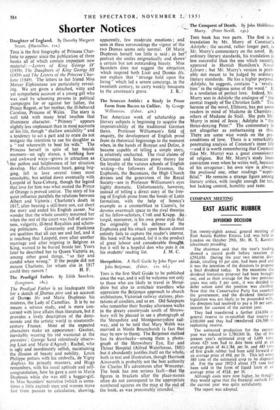The Prodigal Father. By Edith Saunders. (Longmans. 18s.) The Prodigal
Father is an inadequate title for a sketch of pumas pere and an account of Dumps fiLs and Marie Duplessis his mistress, the Lady of. Camellias. It is by no means a serious study, and is more con- cerned with love affairs than literature, but it provides a lively description of the demi- monde and the artistic world in nineteenth- century France. Most of the expected characters make an appearance : Gautier, inevitably wearing his red waistcoat at the premiere ; George Sand relentlessly observ- ing Liszt and Marie d'Agoult ; Rachel, who is ugly and inordinately selfish, maintaining the illusion of beauty and nobility. Louis Philippe potters with his umbrella, de Vigny displays his princely manners, and Hugo remembers, with his usual aptitude and self- congratulation, how he gave a coin to Marie Duplessis while she was still a beggar-girl. In Miss Saunders' narrative (which is some- times a little excited) men and women move fast from passion to- calculation, showing,
apparently, few moderate emotions ; and seen in these surroundings the vigour of the two Dumas seems only normal. Of Marie Duplessis herself too little is said ; in her portrait she smiles enigmatically and shows a certain but not outstanding beauty. Miss Saunders does not suggest the attraction_ which inspired both Liszt and Dualas fils, nor explain that " strange hold upon the living " which led a severe concierge, in the twentieth century, to carry weekly bouquets to the courtesan's grave. J. R.


































 Previous page
Previous page